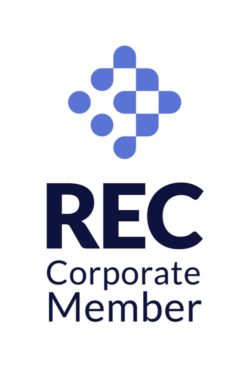AI was the breakout technology of 2023, and is only set to become more widespread in 2024. As it becomes more well-known, many employers are asking themselves how they can benefit from large language models (LLMs), also known as AI.
After using some of the well-known applications such as ChatGPT and Google Bard, here’s our thoughts on how employers can leverage this growing trend to improve and streamline their hiring processes.
Writing Job Descriptions
Many job descriptions include similar information. Writing a job description that sets out an employee’s role and duties is a time-consuming process that can be sped up by using AI. Although some people argue against it, we’d suggest that LLM models are ideal for repetitive tasks that require analysis or generation of text.
Before you go asking ChatGPT to write a job description, you’ll want to feed it some information about your company, its values and the role you’re advertising. With a well-crafted prompt, you’ll be surprised at how good the description can be.
So, instead of “write me a job description for a Senior Management Accountant role,” try something like this instead:
I am an accountancy firm with a turnover of £150,000 per annum. We are hiring for a Senior Management Accountant with a salary starting from £40,000 per year. Our company places a strong emphasis on core values of diversity, inclusivity and promoting the professional development of our staff.
Write a job description for the role. Sentences should be concise, easy to comprehend and key points in a bullet list.
Providing this information allows ChatGPT to understand that you’re based in the UK (using the £ sign), and helps it output a more relevant description. For example, our output with this prompt was written in UK English, and included UK accountancy bodies such as ACCA and CIMA in its output.
Tweak The Output
The output given by ChatGPT, or another generative AI software, will almost definitely need to be tweaked for the specific role you’re advertising. After all, you want the job description to give the most accurate reflection of the roles and responsibilities to ensure you attract the right candidates. Make sure you tailor the AI output to make it 100% relevant to your company.
Screen Candidates
Going back to the Senior Management Accountant role we mentioned above. If you had even a low number of applications, it would be a time consuming process to read every application and qualify candidates for interview, unless you’ve used a specialist finance recruitment agency. Here’s how AI can help you out.
Feed the finalised job description into your chosen AI software as a prompt. You can then copy the applicant’s CV, personal statement etc and ask it to check whether they meet your essential requirements. The AI model will be able to process the language used much quicker than a human and check it against your person specification in seconds.
This can be especially useful where you have hundreds of applications to check, and need a way to quickly filter some out to make it a more manageable process. The remaining applications can then be manually checked to determine which candidates will procede to interview.
Generate Interview Questions
Sticking with the Senior Management Accountant role, your AI software will now know about your company and its values, the job description as well as the person spec. With all of this information, why not have the AI help generate some thought-provoking interview questions?
We tried out various prompts, and got a list of excellent questions that would assess a candidate’s suitability for the role:
For the same company and job role, please generate a list of 10 possible interview questions that we could ask the candidates. At the end of the interview, we should have an understanding of the candidate’s knowledge and skills of management accounting, their previous experience, strengths and weaknesses as well as their fit with the company culture.
By telling the software the attributes we’re looking to test, it understands the range of questions that it should provide. As LLMs are learning models, it was able to utilise the information we had given it previously to generate a specific list for our interview. Here are a couple of examples of questions we were given:
Can you give an example of a financial forecasting challenge you faced and how you addressed it?
Our company values diversity and inclusivity. Can you share how you have contributed to creating or supporting an inclusive environment in your previous roles?
What Not To Use AI For In Recruitment
The above examples show some time-saving ways to implement AI into recruitment processes. However, there are some aspects that we don’t believe are suited to AI just yet.
One of these is writing job advertisements. At this point, we believe that the human touch is needed to craft job advertisements that are unique, and stand out in a crowded marketplace. LLMs such as ChatGPT and Bard work by utilising data that is currently online, which in our experience means that job advertisements end up looking very similar to others: complete with the usual meaningless clichés that jobseekers have become accustomed to.
At James Ray Recruitment, we have been experimenting with AI for repetitive tasks that don’t require a great deal of human input, and found it to be a huge time-saver. Whilst we still have a lot of human input into the final outcomes, we’ve been able to utilise our time on more impactful processes such as crafting bespoke job advertisements.
Conclusions
There are mixed opinions from agencies on whether AI has a role in the recruitment industry. It is our opinion that AI is here to stay, and that companies should look to utilise it now before they are left behind. However, we have used it as an assistant to people-centric recruitment rather than a replacement for our talented and experienced staff.


